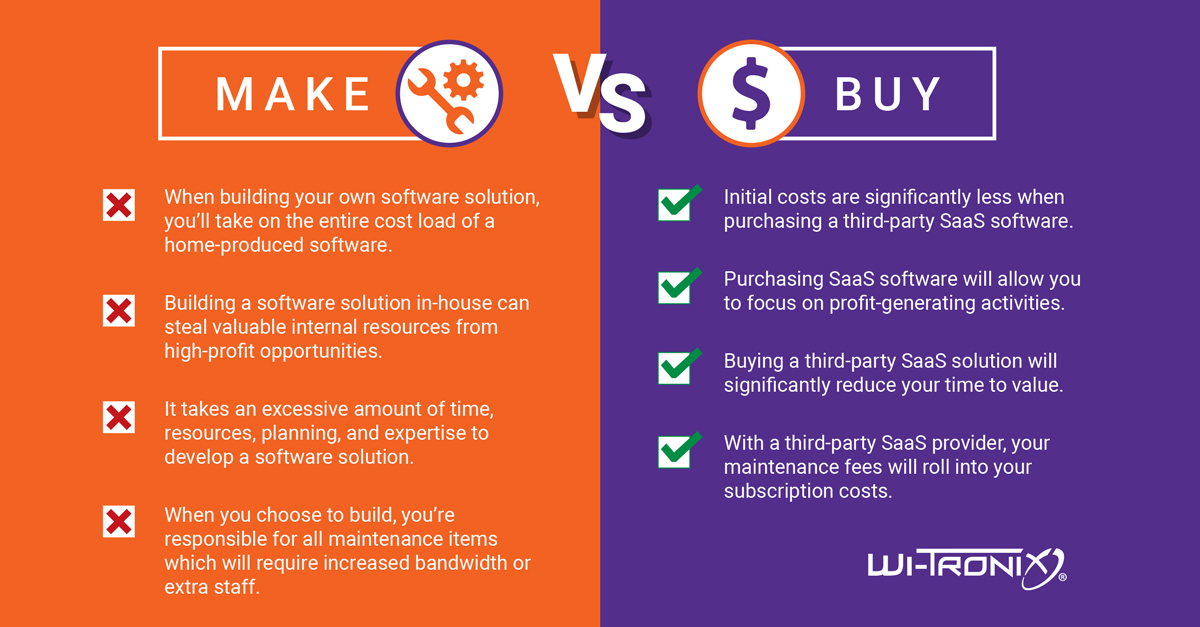Why Your Railroad Should Strongly Consider Buying vs. Making
July 8, 2021

Railroads often come to us looking for a remote monitoring solution and one of the questions we hear often is: “Why should I buy your software when I can build my own?”
Our answer is simple, when you buy from a third-party Software-as-a-Service (SaaS) provider like us, we’ll build, install, and maintain the product for you.
The next question is: “What is the SaaS model?”
The SaaS model is a distribution model in which a company hosts software via the internet and provides access to customers on a subscription basis.
Railroads typically have two options when it comes to purchasing software:
- The traditional method is to build the software outright and run it on-premises.
- The second option, which most railroads are choosing, is buying third-party software using the SaaS model.
Let’s explore why more and more railroads are moving in this direction.
The best way to explain the growing trend of railroads are partnering with SaaS vendors is by looking at the “Buy vs. Build” perspective:
- Financial Costs – Both initial and ongoing costs are significantly less when purchasing a third-party SaaS software. When building your own software solution, you have to create a whole new department, including processes, people, tools/technology, and additional management. This means you’re paying for the initial buildout, ongoing support, upgrades, platform migrations, and keeping up with industry trends. All these costs can add up quickly and end up costing you hundreds of thousands of dollars.
- Opportunity Cost – Purchasing SaaS software will allow you to focus on profit-generating activities, whereas building a software in-house can steal valuable internal resources from high-profit opportunities. You can take advantage of the SaaS platform’s existing functionality in a much faster timeframe than a company trying to DIY a solution.
- Time-to-Value – Buying a third-party SaaS solution will significantly reduce your time-to-value. It takes an excessive amount of time, resources, planning, and expertise to develop a software solution tailored to your organization’s needs. When buying a third-party solution, implementation can take place as soon as a few months or even less, as opposed to a few years when developing in-house. It’s also generally easier to lean on a third-party provider to build in new functionality and value, as their very livelihood hinges on their ability to continuously and quickly improve their product.
- Maintenance – With a third-party SaaS provider, your maintenance fees will roll into your subscription costs. Their staff will help launch their solution at your organization, manage maintenance going forward, and push out new features and hardware. When you choose to build, you’re responsible for all maintenance items related to your new software such as: launches, bug resolutions, training, compliance, and building new features. All that maintenance will likely require increased bandwidth and extra staff.
An example of SaaS value in action: A Class 1 railroad customer of Wi-Tronix was previously managing their own solution for years, but was tired of dealing with excessive storage, limited AI capabilities, and competing for internal resources with other departments. This customer decided it was best to integrate with our software in order to eliminate maintenance costs and lack of technological capabilities. The result? They now outperform most other Class 1’s when it comes to fuel efficiency and regulatory compliance.
Choosing an innovative SaaS approach allows you to focus on what’s important: your fleet or asset’s needs both now and in the future.
